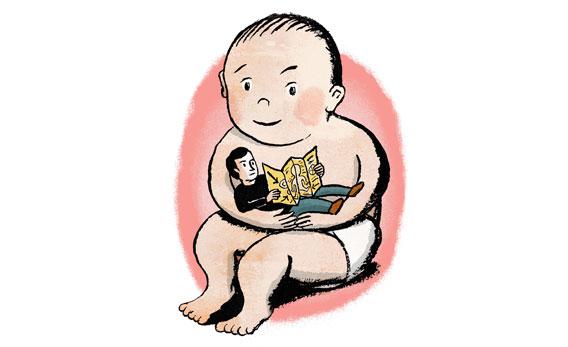In our household, teething is the universal solvent: Whatever the problem with the baby, the cause is teething. Since almost all problems in infancy need to be worried about less, not more, this is ideal: All we need is an explanation, not the explanation.
But for many centuries, teething was not a reassuring explanation. It was the opposite. The irritation of the gums, the failure of the teeth to break through—all this was said to upset the fragile nervous system of the child, causing severe convulsions and quite possibly death. The etiology was somewhat unclear, but the consequences were not. They had been clear since Hippocrates, who wrote about it. In 19th-century England, more than 10 percent of childhood deaths were blamed on teething. Even as late as 1894, you could find doctors in the U.S. writing sentences like this: “So deadly has it become, that one-third of the human family die before the twenty deciduous teeth have fully appeared.”
All this had a certain logic. In an age of high infant mortality, it made sense to blame that mortality on the proximate cause—the misery that the infant was clearly experiencing. But attributing all maladies to teething was not benign. The treatment—often lancing, often less than sterile—could be fatal. (It was only at the turn of the 20th century that medical opinion turned against slicing open the gums: “Lancing the gums … has lost most of its charms,” the pediatrician Abraham Jacobi memorably wrote in 1903.) In 1860, an American doctor, fed up with all this, wrote angrily, “I can assure you that the readiness to attribute all the diseases of infantile life to teething has destroyed more human beings than many of the wars described in history.”
To ward off the curse of teething, babies since ancient times have worn necklaces adorned with magical charms: coral sticks, semiprecious stones, a wolf’s tooth. Some amulets were designed for dual use as chew toys, but many were not. Sometimes they were even tied around the waist, not the neck. They were meant not for the body but the spirits.
There are few things that have inspired as many folk remedies as teething: The lists of remedies go on and on. And they live forever. In ancient Greece, Soranus recommended rubbing the brains of a hare on the gums. You can find this same treatment in recent American folklore. (Also, from Tennessee: Rub a minnow on the gums.)
In the 1800s, there were fewer topical applications of brains and more proprietary concoctions. Teething was now big business. Numerous solutions and syrups were trumpeted, and in this lightly regulated era, many households were awash, unknowingly, in drugs. Many parents swore by Mrs. Winslow’s Soothing Syrup, for example, whose advertisements proclaimed, “Depend on it, Mothers, it will give rest to yourselves and relief and health to your babies.” It gave rest but not health: It was, essentially, “a cocktail of morphine and alcohol.”
I am not very different from any of these parents, of course. I attribute all maladies to teething too. But I am saved from the consequences of my folk explanations: No one is willing to lance anything anymore. If teething once meant everything, it is now said to mean nothing: The current medical literature stresses its deep insignificance. Even everything you have been told teething causes—diarrhea, high fevers, agitated sleep—doctors will be happy to tell you that teething does not cause. In the words of one physician, and in violation of millennia of superstition and scientific conviction: “Teething produces nothing but teeth.”
